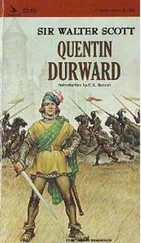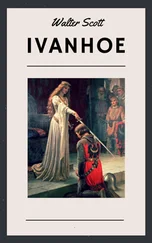Walter Scott - Letters on Demonology and Witchcraft
Здесь есть возможность читать онлайн «Walter Scott - Letters on Demonology and Witchcraft» весь текст электронной книги совершенно бесплатно (целиком полную версию без сокращений). В некоторых случаях можно слушать аудио, скачать через торрент в формате fb2 и присутствует краткое содержание. Жанр: История, на английском языке. Описание произведения, (предисловие) а так же отзывы посетителей доступны на портале библиотеки ЛибКат.
- Название:Letters on Demonology and Witchcraft
- Автор:
- Жанр:
- Год:неизвестен
- ISBN:нет данных
- Рейтинг книги:4 / 5. Голосов: 1
-
Избранное:Добавить в избранное
- Отзывы:
-
Ваша оценка:
- 80
- 1
- 2
- 3
- 4
- 5
Letters on Demonology and Witchcraft: краткое содержание, описание и аннотация
Предлагаем к чтению аннотацию, описание, краткое содержание или предисловие (зависит от того, что написал сам автор книги «Letters on Demonology and Witchcraft»). Если вы не нашли необходимую информацию о книге — напишите в комментариях, мы постараемся отыскать её.
Letters on Demonology and Witchcraft — читать онлайн бесплатно полную книгу (весь текст) целиком
Ниже представлен текст книги, разбитый по страницам. Система сохранения места последней прочитанной страницы, позволяет с удобством читать онлайн бесплатно книгу «Letters on Demonology and Witchcraft», без необходимости каждый раз заново искать на чём Вы остановились. Поставьте закладку, и сможете в любой момент перейти на страницу, на которой закончили чтение.
Интервал:
Закладка:
King James was deeply interested in those mysterious meetings, and took great delight to be present at the examinations of the accused. He sent for Geillis Duncan, and caused her to play before him the same tune to which Satan and his companions led the brawl in North Berwick churchyard. [77] [77] The music of this witch tune is unhappily lost. But that of another, believed to have been popular on such occasions, is preserved. "The silly bit chicken, gar cast her a pickle, And she will grow mickle, And she will do good."
His ears were gratified in another way, for at this meeting it was said the witches demanded of the devil why he did bear such enmity against the king? who returned the flattering answer that the king was the greatest enemy whom he had in the world.
Almost all these poor wretches were executed, nor did Euphane MacCalzean's station in life save her from the common doom, which was strangling to death, and burning to ashes thereafter. The majority of the jury which tried Barbara Napier having acquitted her of attendance at the North Berwick meeting, were themselves threatened with a trial for wilful error upon an assize, and could only escape from severe censure and punishment by pleading guilty, and submitting themselves to the king's pleasure. This rigorous and iniquitous conduct shows a sufficient reason why there should be so few acquittals from a charge of witchcraft where the juries were so much at the mercy of the crown.
It would be disgusting to follow the numerous cases in which the same uniform credulity, the same extorted confessions, the same prejudiced and exaggerated evidence, concluded in the same tragedy at the stake and the pile. The alterations and trenching which lately took place for the purpose of improving the Castlehill of Edinburgh displayed the ashes of the numbers who had perished in this manner, of whom a large proportion must have been executed between 1590, when the great discovery was made concerning Euphane MacCalzean and the Wise Wife of Keith and their accomplices, and the union of the crowns.
Nor did King James's removal to England soften this horrible persecution. In Sir Thomas Hamilton's Minutes of Proceedings in the Privy Council, there occurs a singular entry, evincing plainly that the Earl of Mar, and others of James's Council, were becoming fully sensible of the desperate iniquity and inhumanity of these proceedings. I have modernized the spelling that this appalling record may be legible to all my readers.
"1608, December 1. The Earl of Mar declared to the Council that some women were taken in Broughton as witches, and being put to an assize and convicted, albeit they persevered constant in their denial to the end, yet they were burned quick [ alive ] after such a cruel manner that some of them died in despair, renouncing and blaspheming [God]; and others, half burned, brak out of the fire, [78] [78] I am obliged to the kindness of Mr. Pitcairn for this singular extract. The southern reader must be informed that the jurisdiction or regality of Broughton embraced Holyrood, Canongate, Leith, and other suburban parts of Edinburgh, and bore the same relation to that city as the borough of Southwark to London.
and were cast quick in it again, till they were burned to the death."
This singular document shows that even in the reign of James, so soon as his own august person was removed from Edinburgh, his dutiful Privy Council began to think that they had supt full with horrors, and were satiated with the excess of cruelty which dashed half-consumed wretches back into the flames from which they were striving to escape.
But the picture, however much it may have been disgusting and terrifying to the Council at the time, and though the intention of the entry upon the records was obviously for the purpose of preventing such horrid cruelties in future, had no lasting effect on the course of justice, as the severities against witches were most unhappily still considered necessary. Through the whole of the sixteenth, and the greater part of the seventeenth century, little abatement in the persecution of this metaphysical crime of witchcraft can be traced in the kingdom. Even while the Independents held the reins of government, Cromwell himself, and his major-generals and substitutes, were obliged to please the common people of Scotland by abandoning the victims accused of witchcraft to the power of the law, though the journals of the time express the horror and disgust with which the English sectarians beheld a practice so inconsistent with their own humane principle of universal toleration.
Instead of plunging into a history of these events which, generally speaking, are in detail as monotonous as they are melancholy, it may amuse the reader to confine the narrative to a single trial, having in the course of it some peculiar and romantic events. It is the tale of a sailor's wife, more tragic in its event than that of the chestnut-muncher in Macbeth. [79] [79] A copy of the record of the trial, which took place in Ayrshire, was sent to me by a friend who withheld his name, so that I can only thank him in this general acknowledgment.
Margaret Barclay, wife of Archibald Dein, burgess of Irvine, had been slandered by her sister-in-law, Janet Lyal, the spouse of John Dein, brother of Archibald, and by John Dein himself, as guilty of some act of theft. Upon this provocation Margaret Barclay raised an action of slander before the church court, which prosecution, after some procedure, the kirk-session discharged by directing a reconciliation between the parties. Nevertheless, although the two women shook hands before the court, yet the said Margaret Barclay declared that she gave her hand only in obedience to the kirk-session, but that she still retained her hatred and ill-will against John Dein and his wife, Janet Lyal. About this time the bark of John Dein was about to sail for France, and Andrew Train, or Tran, provost of the burgh of Irvine, who was an owner of the vessel, went with him to superintend the commercial part of the voyage. Two other merchants of some consequence went in the same vessel, with a sufficient number of mariners. Margaret Barclay, the revengeful person already mentioned, was heard to imprecate curses upon the provost's argosy, praying to God that sea nor salt-water might never bear the ship, and that partans (crabs) might eat the crew at the bottom of the sea.
When, under these auspices, the ship was absent on her voyage, a vagabond fellow, named John Stewart, pretending to have knowledge of jugglery, and to possess the power of a spaeman, came to the residence of Tran, the provost, and dropped explicit hints that the ship was lost, and that the good woman of the house was a widow. The sad truth was afterwards learned on more certain information. Two of the seamen, after a space of doubt and anxiety, arrived, with the melancholy tidings that the bark, of which John Dein was skipper and Provost Tran part owner, had been wrecked on the coast of England, near Padstow, when all on board had been lost, except the two sailors who brought the notice. Suspicion of sorcery, in those days easily awakened, was fixed on Margaret Barclay, who had imprecated curses on the ship, and on John Stewart, the juggler, who had seemed to know of the evil fate of the voyage before he could have become acquainted with it by natural means.
Stewart, who was first apprehended, acknowledged that Margaret Barclay, the other suspected person, had applied to him to teach her some magic arts, "in order that she might get gear, kye's milk, love of man, her heart's desire on such persons as had done her wrong, and, finally, that she might obtain the fruit of sea and land." Stewart declared that he denied to Margaret that he possessed the said arts himself, or had the power of communicating them. So far was well; but, true or false, he added a string of circumstances, whether voluntarily declared or extracted by torture, which tended to fix the cause of the loss of the bark on Margaret Barclay. He had come, he said, to this woman's house in Irvine, shortly after the ship set sail from harbour. He went to Margaret's house by night, and found her engaged, with other two women, in making clay figures; one of the figures was made handsome, with fair hair, supposed to represent Provost Tran. They then proceeded to mould a figure of a ship in clay, and during this labour the devil appeared to the company in the shape of a handsome black lap-dog, such as ladies use to keep. [80] [80] This may remind the reader of Cazotte's "Diable Amoureux."
He added that the whole party left the house together, and went into an empty waste-house nearer the seaport, which house he pointed out to the city magistrates. From this house they went to the sea-side, followed by the black lap-dog aforesaid, and cast in the figures of clay representing the ship and the men; after which the sea raged, roared, and became red like the juice of madder in a dyer's cauldron.
Интервал:
Закладка:
Похожие книги на «Letters on Demonology and Witchcraft»
Представляем Вашему вниманию похожие книги на «Letters on Demonology and Witchcraft» списком для выбора. Мы отобрали схожую по названию и смыслу литературу в надежде предоставить читателям больше вариантов отыскать новые, интересные, ещё непрочитанные произведения.
Обсуждение, отзывы о книге «Letters on Demonology and Witchcraft» и просто собственные мнения читателей. Оставьте ваши комментарии, напишите, что Вы думаете о произведении, его смысле или главных героях. Укажите что конкретно понравилось, а что нет, и почему Вы так считаете.









